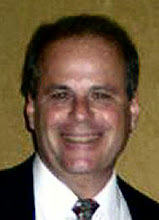Marianne Hirsch and Leo Spitzer have written a book about Czernowitz and the Museum, within the context of its Yiddish Vinkl Bookstore, has put online a synopsis of the book along with the book's preface. Here is a synopsis of the book:
The 20th century is over. Yet displaced survivors of its horrific wars and murderous “ethnic cleansings,” and their descendants now scattered throughout the world, are still haunted by the places they or their ancestors once called “home.” Many have made it their mission to research familial and cultural pasts, to revisit ancestral homes and to retrace the steps of lost family members, even when their initial information is scant. This longing for the past continues well into the twenty-first century and, in fact, is fueled by the enhanced possibilities for research offered by the Internet and even by DNA and genetic testing. Many important and minor sites that have long ceased to exist enjoy an active afterlife on the world wide web with websites devoted to them, listservs with growing memberships, and lively communities exchanging pictures and stories about their own or their parents’ past. This desire to reconstruct lost worlds seems to cross-generational, national, and ethnic lines.
We write about the afterlife in memory and history of one such place, Czernowitz – a city in Eastern Europe where, until its shattering and dispersal in the era of the Second World War, a large and assimilated -- predominantly German-speaking -- Jewish community once flourished.
Initially fascinating to us was the fact that Czernowitz, as a political entity, had in fact ceased to exist in 1918, with the collapse of the Austro-Hungarian Habsburg Empire in the aftermath of World War I. Yet throughout its subsequent iterations – Cernauti under Romanian rule, Chernovtsi, under the Soviets – its Jewish inhabitants continued to live there as though not much had changed. They held on to what the Habsburgs had been able to offer Jews – emancipation and the promise of social integration and equality, in exchange for linguistic and cultural assimilation to Austrian ways of life. Even those who survived deportation and immense suffering under fascist/Nazi domination continued to maintain and to transmit to us -- the postwar generation -- strongly positive, nostalgic memories of a tolerant multi-ethnic city and culture that had long disappeared in reality. At the very same time, however, they also transmitted traumatic memories of persecution, deportation, displacement, and the loss of home.
Ghosts of Home follows several generations of people from this city and their descendants. Through interviews and oral accounts, memoirs, family albums, objects and memorabilia, and through a number of trips to present-day Chernivtsi (now Ukraine), we tell a multi-stranded story about twentieth century European Jews. Parts of that story are familiar: the story of Jewish assimilation and secularization, of the German-Jewish symbiosis that was to turn so tragic, of the encounter between fascism and communism, of the lure of Zionism and Hebrew, and the equally powerful lure of diaspora nationalism and Yiddish, and, of course, the story of the Holocaust. But, situated at the crossroads between East and West, and between the Soviet and Western spheres, Czernowitz also offers unknown stories about the fate of Europe’s Jews: stories of resilience, rescue and survival, of choices made in impossible circumstances, of the continuation of normality under extremity, of the perpetuation of the dream of multi-ethnic tolerance against immeasurable odds. In this first historical account in English of Czernowitz, we bring this dream to life, but we also show how the search for the past can result in active engagements with the present, even when that present is located across the world.
You can read the preface of the book at www.museumoffamilyhistory.com/yv-ghosts-of-home.htm .
Subscribe to:
Post Comments (Atom)




No comments:
Post a Comment